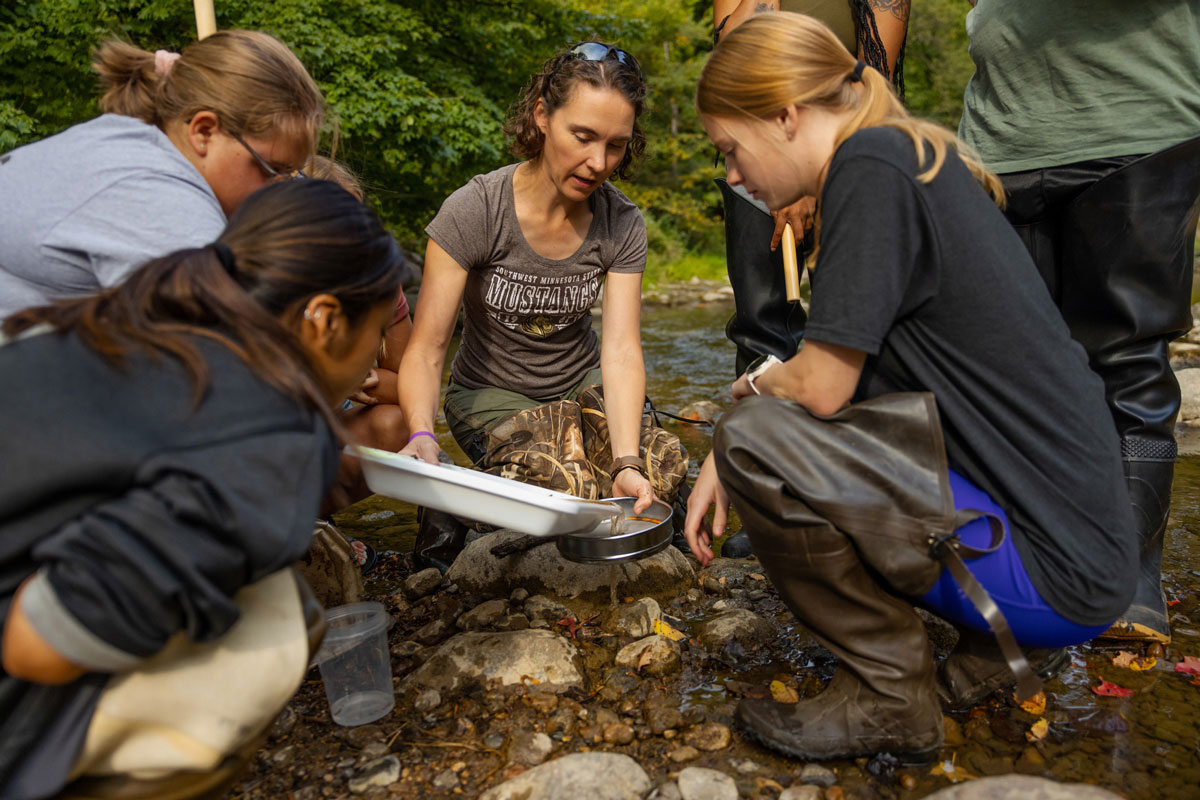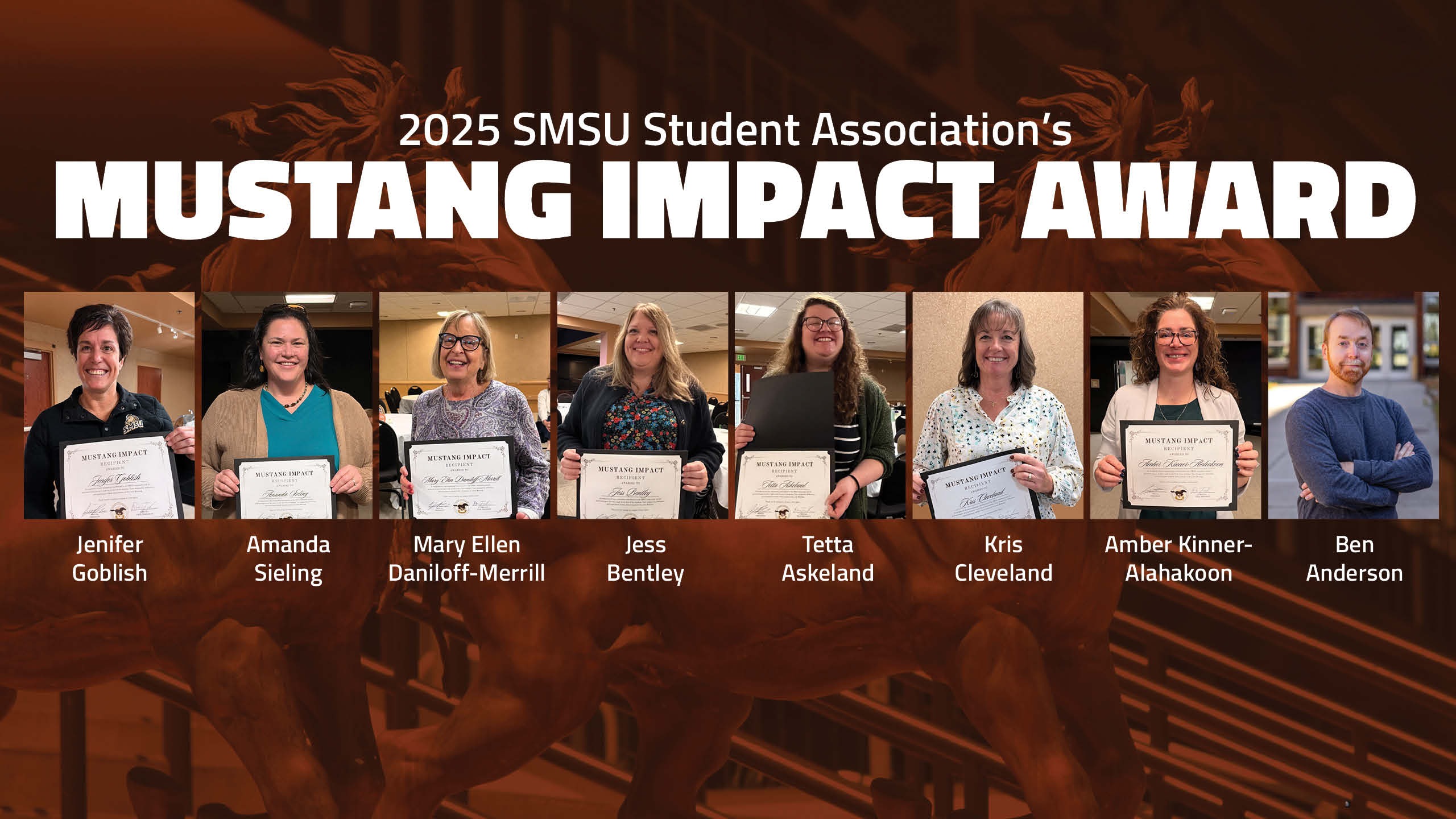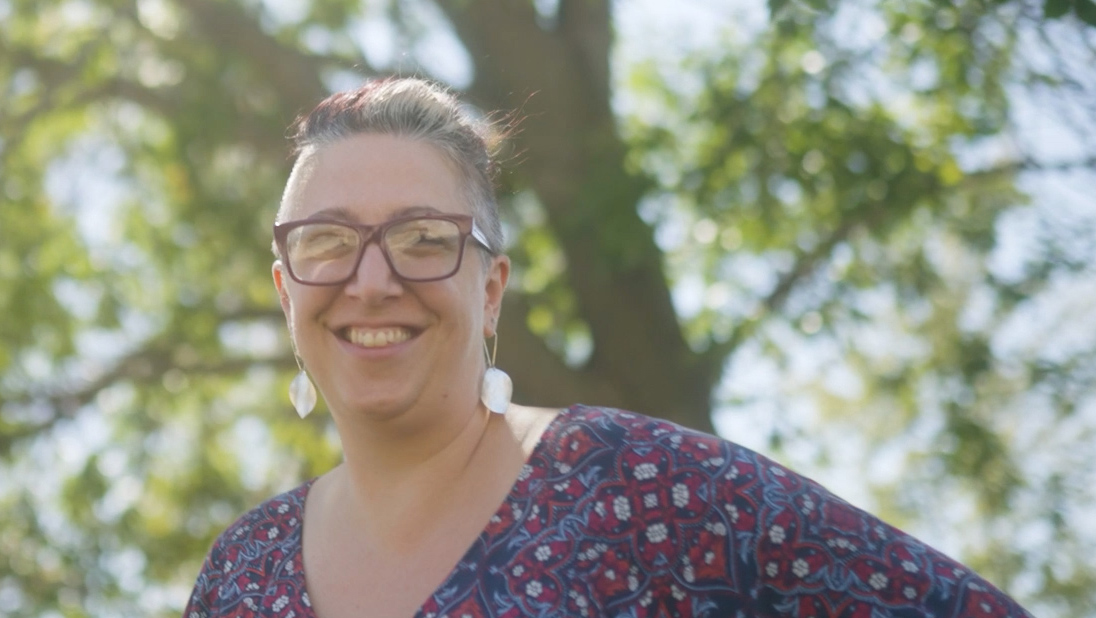SMSU Biology Program Takes Learning Outdoors
Published Friday, March 24, 2023
SMSU Biology students are conducting research on insects active in all seasons to understand the health of the Redwood River ecosystem. They focus on collecting adult insects and bringing them back to the lab to study their activity at different temperatures.
In the fall, they study insect populations to compare with that of the winter population. Associate Professor of Biology Dr. Alyssa Anderson and students from her BIOL 405 Insect Ecology & Diversity Lab collected aquatic insect samples in the Redwood River at Camden State Park in the fall.
“By assessing the aquatic insect community within streams or rivers we can get a good idea for the health and quality of those systems,” said Dr. Anderson. So, by looking for their presence, absence, abundance and diversity – basically who is there and who is not – we can get a good feel for the health of river systems.”
The Biology Program recently acquired new cold incubators purchased with support from the SMSU Foundation. The cold incubators maintain an environment at a steady temperature. Two incubators allow them to study insect activity at two different temperatures.
“We’re primarily looking for two different types. One is from a family of flies called non-biting midges or chironomids. They look like mosquitoes and are about that size, but they don’t bite. So those are one of the most abundant winter-active insects,” said Anderson. “Stoneflies are another abundant one. So, for the past couple of years, students have focused on both of those two groups. We’ll find sporadic emergence of mayflies, caddisflies, and a few other minor groups, but the stoneflies and the chironomids are the most numerous.”
The group of insects in the study has aquatic larvae and terrestrial adults, and are an important food source for trout, which are abundant in the Redwood River.
Dr. Anderson developed an interest in winter-active insects during her graduate studies at the University of Minnesota, studying with her major advisor, Dr. Len Farrington.
“When I was introduced to the idea, I thought how cool is it that there are insects walking on snow in the middle of winter? I mean, nobody really thinks of that, hence there’s a whole slew of untapped research questions that can be addressed,” said Anderson. “The nice thing about this work is that the methods aren’t very complex, so it’s easy for the students to grab onto, and the research questions are unique, and even a seemingly simple question can add to the body of research since nobody has done it before. So, it’s a great opportunity for students.”
“I took my invertebrate zoology class out. There were a dozen or so students in the class.,” she said. “We go out to Camden Park. We’re out in waders on the banks flanking the Redwood River collecting insects in vials. We bring them back to lab and check on them every day to see how long they stay with us.” It was a gorgeous day and it’s always better than sitting in the classroom.”
“It’s one thing to talk about these things. It’s another thing to go out and actually do it. Most of them are convinced that it’s kind of cool. They get hands-on and get to play in the snow; it makes science fun.”
Anderson explained that the insects can be active in winter thanks to a cryoprotectant, made up of anti-freeze molecules. Insects have two different strategies to tolerate winter temperatures. They either can tolerate cold or they can super-cool. To super-cool means they freeze at a lower temperature than 32 degrees.
“Chironomids go through a complete metamorphosis. At the larval stage, they live at the stream bottom and can tolerate freezing temperatures. Then there’s a shift as they transform into the adult stage,” Anderson said. “They can no longer tolerate freezing, so they adapt and are able to super-cool. They employ both strategies at different life stages.”
“However, we still don’t really know when they transition. Probably the pupal stage is when they are undergoing a complete biological reorganization,” she continued. “It’s a really amazing process for students to learn about and it gets them eager to learn more.”
“The great part about the research is that students can enter the research from any level and that sparks their interest in some way,” said Anderson. “And even if it’s a small piece, they’re still able to contribute new knowledge to the field.”
“Because there is so little research done on this subject, students are able to add to scientific research in a very real way,” said Anderson. “That is exactly the kind of opportunity we want to offer our students at Southwest. They don’t have to wait until they’re a senior or graduate student to engage in some exciting hands-on scientific research.”
The samples collected by the students follow techniques and protocol developed by the Minnesota Pollution Control Agency.
Related Articles
Student Association Presents the First Cohort of Mustang Impact Awards
Posted on 11-26-2025






